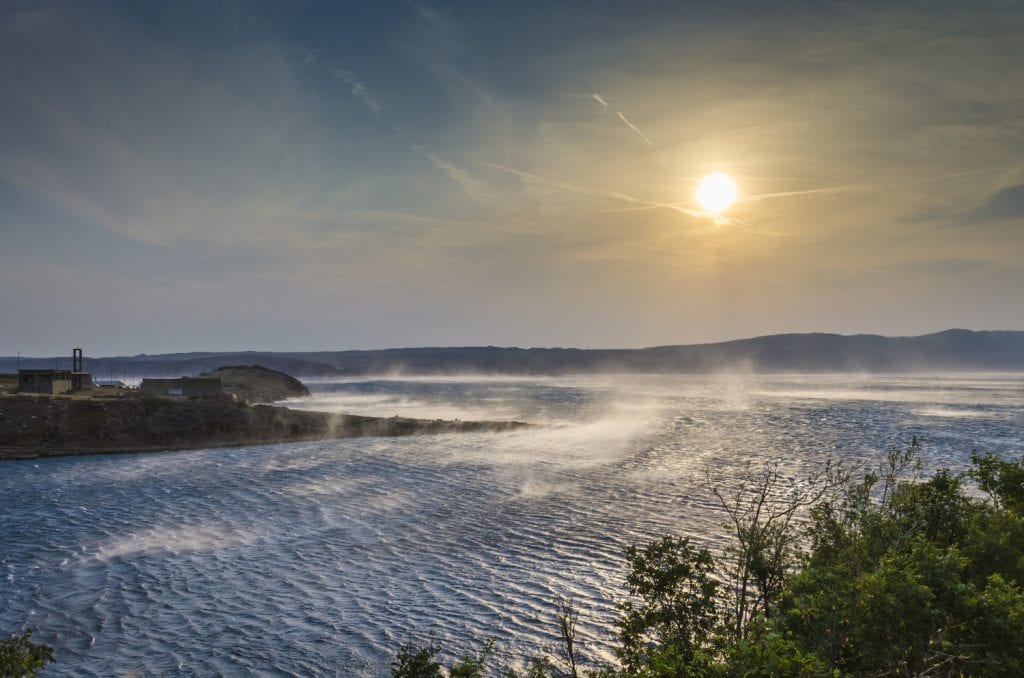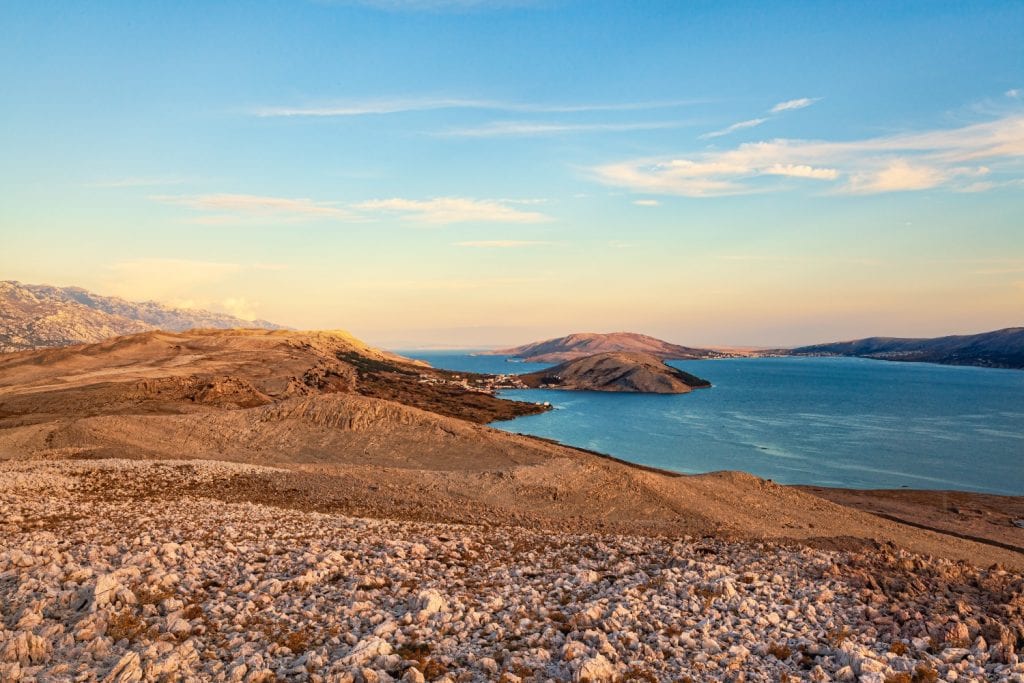An impressive and sometimes dangerous force of nature, the bura wind is certainly to be feared at times. However, it has earned great respect due to its many positive effects.

One of the important aspects of local knowledge and something that you will certainly come across when talking to Croats, especially on the coast, is the winds. There is a wind in Croatia called bura or, in English, bora. Let us put it this way: if Brits talk about the rain and Swedes about the lack of sunlight, then seaside Croats talk about the wind.
Bura is the so-called local katabatic wind, which in layperson’s terms means that it is caused by the cooling of air over a highland area that then flows downhill under the influence of gravity. The definition of bura is a strong, dry northern or northeast wind that plummets from the top of Mount Velebit to the Adriatic sea. It is freezing cold even when it’s sunny, and it is what causes roads and bridges to be closed, mayhem at sea, and damage to houses and other structures. Bura once even tore down a wind turbine at a wind farm on Pag. It is good to be prepared for it.
What is Bura wind
As mentioned in the introduction, bura is a dry northern/northeast wind that comes from the Velebit mountain range directly down to the Adriatic sea. It is known for its high speed and can reach up to 200 km/h, making it one of the strongest and coldest winds in Europe. It usually occurs during the winter months and can last for several days, causing damage to buildings, infrastructure, and vegetation.
The bura wind in Croatia reaches its maximum strength when a high-pressure system settles over the snow-capped mountains located behind the Dinaric mountain range along the coast, while a low-pressure system remains calm in the south over the warmer Adriatic sea. At night, as the air becomes colder and denser, the bura wind intensifies further. The wind’s starting temperature is so low that, despite warming during its descent, it remains a cold wind when it reaches the lowlands.

What is the origin of the Bura wind
When we talk about the origin of bura, we actually want to explore the origin of the word itself. As you will see, this exploration will lead us far way, both geographically and historically. The wind known as bura has different names in various languages, such as μπόρα (mpóra) in Greek and bora in Italian and English. The Croatian name bura and Slovenian burja, come from the Common Slavic word burja, meaning ‘storm’. The Greek mythological figure of Boreas and the Modern Greek term for the north wind, βοράς (boras), share the same root as bora. Some historical linguists believe that this root may stem from the Proto-Indo-European term *gworhx-, meaning ‘mountain’, which gave rise to words for ‘mountain’ in Slavic and Sanskrit. Yup, we went full linguistic nerd on this one!
How strong is Bura wind
Bura wind speed is right there in the company of the strongest winds ever recorded. It reaches speeds of up to 220km/h, while the strongest gusts recorded were 304km/h near Sveti Rok Tunnel and 248km/h on the Maslenica Bridge. In comparison, the strongest wind ever recorded on Earth was a hurricane gust that passed by Australia at the speed of 408km/h.
In February 2012 during the Eastern European Cold Wave, the wind was so strong that the shoreline froze and piled up with snow in Senj, a town where bura regularly reaches an impressive speed. On the island of Pag, bura threw fish out of the sea. Ripping trees with roots and destroying roofs is a common pastime of bura’s – that is why houses on the coast are made of stone.
Sailing safety tips
If you are reading about bura and the Adriatic sea, there is a big chance you plan on some kind of sailing, right? So, if we are right and you’re planning to set sail, it’s important to prioritize safety on the water. Firstly, make sure you’re familiar with the rules and regulations of the area you’ll be sailing in. Always wear a life jacket, even if you’re a strong swimmer. Check the weather forecast before heading out, and keep an eye on changing conditions throughout your journey. It’s also a good idea to let someone know your planned route and the estimated time of arrival, just in case of any unexpected mishaps. Ensure you have all the necessary safety equipment on board, such as flares, a first aid kit, and a fire extinguisher. Remember to be mindful of other boats and water users, and always obey speed limits and other boating regulations. With these tips in mind, you can enjoy your sailing adventure with peace and serenity. There, now we know you will be safe out there exploring the big blue.

Positive impacts of Bura
Bura wind in Croatia owes its good reputation to the positive effects it has on people. It cleans the air, chases away the clouds, and brings mental clarity. It is refreshing and invigorating, the complete opposite of jugo which is usually blamed for melancholy, laziness, and, of course, rain. There is nothing purer than the crystal clear air after bura, allowing you to sea as far as Italy. The colors become so bright that you feel like your vision has suddenly improved. People from the sea appreciate and welcome this wind despite its negative sides. For example, It is bura that gets the credit for the unparalleled taste of Pag cheese and lamb, as it carries the salt sediment from the sea, which the sheep then graze on, making their way through the barren terrain in search of wildflowers and medicinal herbs like rosemary and sage. It is also responsible for the drying process of pršut, the prized cured ham of Istria and Dalmatia.
Bura is a thing of pride for Croatians and something the Camp Village Šumuni visitors can fully appreciate when they visit our beautiful seaside. One example of this would be an opportunity to enjoy some windsurfing and catamarans. If, on the other hand, you are looking for something more landlocked, there is always a plethora of opportunities like camping or hiking. If you have any questions about exploring our beautiful nature, please do not hesitate to contact us.